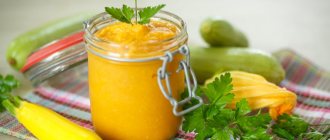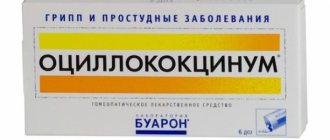Meat complementary foods should be introduced to the child from 7 months (for children on artificial feeding, children with low hemoglobin levels, an earlier introduction is sometimes allowed - at 5.5–6 months). Only meat is a complete source of animal protein and fat, essential amino acids, phosphorus, and vitamin B12. And most importantly, it contains iron. For the first feeding, it is recommended to use one-component meat purees from rabbit, turkey, chicken, veal, beef, but not lamb. If you are allergic to cow's milk protein, then you should wait with beef and veal.
Content:
1. At what age can you give meat 2. Useful properties 3. Can meat be harmful 4. Basic rules 5. Differences in varieties 6. Several important questions 7. What kind of meat should not be given? 8. How to calculate the amount of meat? 9. How often do you add meat to the children's menu? 10. Benefits of ready-made purees
Buy at the store or make your own
There are arguments to use industrially produced canned food, since this food is tested. You can read what is included, what products, if there are additives, preservatives. It also indicates what age the product is intended for.
The selection of ready-made baby food products is quite large
You should take into account that industrial canned food contains 40-50% pure meat . The rest is either meat and vegetable components, or preservatives, stabilizers, starch.
In industrial production, there are three degrees of grinding. It is either homogenized for 6-8 months. This is a very crushed meat puree for the first feeding. There may be a coarse puree, and the next type is coarsely crushed for older children.
Canned food can be multicomponent or monocomponent.
In addition, the can may indicate that this is not just canned meat, but in combination with vegetables:
- pumpkin;
- potato;
- carrot;
- cabbage.
You should always look at the expiration date of the jar.
For each complementary food, use only freshly prepared meat
But there are mothers who want to cook meat themselves. To do this you need to buy good quality meat. This is always a big question - where to find such a product.
If you do find it: at the market or among grandmothers who run their own farms, then this meat needs to be divided into portioned pieces.
Each of these pieces, when you cook it just before eating, should be boiled for 2 hours. Then this piece can be passed through a meat grinder twice or chopped with a blender and brought to a homogenized mass that is suitable for your child . And then you add this meat to vegetables.
The downside is that cooked meat cannot be stored in the refrigerator or re-frozen. It's cooked and needs to be eaten.
At what age can you give meat?
The introduction of complementary foods usually begins at 4–6 months. The timing is relevant for children both on IV and during breastfeeding. At the same time, the individual characteristics of the baby and his readiness to accept new food are taken into account. The preferred age for introducing complementary foods into the diet of a healthy child is 5 months. In any case, the very first product on the baby’s menu is not meat, but porridge or vegetable puree. Only after the body has adapted to them will it be possible to further expand the diet. Do not forget that each child is individual, so nutritional needs may vary. However, the average age when meat is introduced to a child is 6 months. There are canned meat (raw meat 40-65%), meat-based (10-20%) and plant-based with meat (less than 10%). Meatballs are also available.
According to the “National Program for Optimizing the Feeding of Children of the First Year of Life in the Russian Federation,” meat complementary foods should be prescribed no later than six months. Meat should appear in a child's complementary foods after the introduction of grains (porridge) and vegetable dishes. Meat complementary foods are especially needed for children who tend to develop iron deficiency anemia.
"Tema" (Russia)
In addition to meat, the composition contains chicken fat, water, milk powder, cereals for viscosity, salt and parsley. One of the disadvantages is the presence of salt, therefore, as a pediatrician, I recommend using this puree no earlier than 9.5 months; until this age, the child does not need salty food. Also significant disadvantages are the smaller relative proportion of meat compared to other brands and canned packaging.
Weight: 100 g.
Price: about 40 rubles.
According to parents' reviews: children eat willingly, the puree tastes very pleasant. Suitable for kids who refuse to eat meat. It’s convenient that you can easily and quickly prepare soup from it; it’s great for adding variety to other brands of pureed meat.
Beneficial features
The start of complementary feeding should not be too early, when the body is not yet ready for such food. This can cause disorders and allergies. However, if introduced into the diet in a timely manner, the product will be very useful:
- it is a source of protein, which is necessary for growth; it is used in the body as a building material. The protein content in children's canned meat (mashed beef, rabbit meat, poultry (chicken, turkey), lamb, etc.) is 8–10%;
- this is a product rich in micro- and macroelements (iron, magnesium, zinc), as well as vitamins B₁, B₂, B₆ and B₁₂;
- the composition contains a rich set of amino acids that can only be obtained from food;
- heme iron contained in meat is absorbed faster than a similar element from plant products;
- The fibrous structure helps to quickly develop chewing skills.
"Agusha" (Russia)
Only hypoallergenic meat from young animals with complete protein is used in preparation. Product development is carried out in a specialized research center, testing is carried out by well-known scientific medical laboratories.
Advantages: there is nothing superfluous in the composition - you can easily use it for the first meat feeding.
Disadvantage: metal can packaging is inconvenient to use.
Weight: 100 g.
Price: 40–60 rubles.
According to parents' reviews: children eat well, and most importantly, not everyone likes the canned packaging, high price and liquid consistency.
“Babushkino Basket” (Russia)
The product has been repeatedly awarded the main prize “Best for Children”, winner of the competition for children’s meat products “Meat Industry” in 2011, and the Grand Prix in 2012 at the international competition “Dairy and Meat Industry”. The composition contains rice cereal, vegetable oils, milk powder, salt, and water.
Advantage: the only puree that contains not starch as a thickener, but rice, which is better absorbed.
Disadvantages: can be used from 8 months.
Weight: 100 g.
Price: 45–65 rubles.
According to parents' reviews: the puree is good, tender, children eat without refusing.
On a note! According to the research results of the “Test Purchase” program, this meat puree became the winner.
Can meat be harmful?
Some types of meat lead to allergic reactions, and in large quantities this product puts a strain on the kidneys. It is also worth following certain recommendations when choosing, for example, giving low-fat varieties. The guide to baby nutrition, edited by V. Tutelyan and I. Kon, suggests introducing meat at 9 months. It is best to use quail, rabbit, turkey, and chicken for this. How well a particular type of meat is digested can be determined by the consistency of the stool. In case of any problems, symptoms from the gastrointestinal tract may occur: increased gas formation, bloating, discomfort.
Meat for the first feeding - what to choose?
As an introduction to meat, your baby should be offered dietary, easily digestible varieties. These include rabbit and turkey. Calf and chicken meat should be used with caution, as they can cause an immune response. If you previously had an allergy to milk protein or chicken yolk, then you will have to avoid these varieties.
Before drawing up a new menu, parents must clearly decide on the type of meat complementary foods - prepared independently or ready-made, which is sold in jars. Experts prefer the second option, as it has its advantages:
- Safety – the product is not perishable.
- The meat from the can is ground to a consistency that is almost impossible to achieve at home.
- The taste of the dish is significantly better due to the correct interaction of various additional components.
When using complementary foods from the store, you need to start with a single-component (that is, containing only one type of meat) puree. It is important to pay attention to the integrity of the packaging and production time. It is also worth studying the information from the manufacturer - at what age is it recommended to take it and whether it contains unwanted additives (for example, flavorings). It is important to remember that an open jar of canned meat can be stored for no more than a day and only in the cold.
Gradually, you can dilute the baby’s menu with meat puree with the addition of vegetables (but not with potatoes - it is very difficult for the stomach to accept such a combination). Such canned food is very convenient to add to vegetable soups or food that is already familiar to the baby, for example, to dairy-free porridge.
Photo gallery of purees from different manufacturers
Meat puree "Tyoma"
Turkey puree
Beef and pumpkin puree
Hypoallergenic pork puree
Turkey meat puree “Hame”
Basic Rules
Maintain order.
At least two weeks should pass between the appearance of new products in the diet, regardless of whether it is meat or something else. The child must gradually get used to previously unfamiliar food and adapt. However, if he does not eat what is offered, do not give up and try it again. It can take 7-10 days to form a habit.
Feed small portions.
It is recommended to start with 5 g and gradually increase the amount to the age norm (at 6 months, the norm for industrially produced meat puree is 5–30 g). You can mix the meat puree with vegetables that are already well known to the baby, or dilute it with breast milk. Also make sure that the consistency of the food is not thick, but not too liquid.
Watch the reaction carefully.
It is better to introduce new foods in the morning to make sure they are digested correctly. If your child experiences redness or other signs of allergies, you should consult a doctor. After the negative effects have passed, you can try offering a different type of meat after two weeks.
Don't use spices.
Salt, pepper or other seasonings should not be present in food, as they create unnecessary stress on the pancreas and kidneys. A small amount of vegetable oil is allowed. If you buy ready-made puree, be sure to pay attention to the composition.
"Frutonyanya" (Russia)
Frutonyanya’s children’s products have already twice become the winner of “Brand No. 1 in Russia” and are the winner of various awards and prizes, which proves that the products were created with care for the youngest residents of the country.
The composition contains corn starch, water, and vegetable oils.
Disadvantage: increased amount of starch.
Weight: 95 g.
Price: from 50 rubles.
According to parents' reviews: the puree is good and tasty; when children refuse meat purees from cheaper brands, Frutonyanya always saves the day, but the consistency is very thick, apparently due to the presence of starch.
On a note! Participants in the “Test Purchase” program, Gerber, “Frutonyanya” and “Tema” meat purees, although they did not pass the national selection, meet all accepted standards and can be quite safely used in the nutrition of small children.
Variety differences
Not all mothers know what meat to start complementary feeding with. In some cases, it is worth taking into account the individual characteristics of the body. If a child is prone to allergic reactions from the skin or intestines, then it is better to choose turkey or rabbit meat. Children who cannot digest cow's milk proteins should not be given veal and beef. When the child has already become familiar with different types of meat, you need to alternate them in the diet - this helps to avoid allergic manifestations and makes the menu more varied. Each meat product has its own characteristics:
- rabbit meat.
It has a higher concentration of iron, phosphorus and B vitamins compared to other varieties. Well absorbed in most cases, less calorie; - turkey.
Contains phosphorus, calcium, iron, vitamins A and B. Improves appetite, has a positive effect on the functioning of the cardiovascular system; - veal.
Contains carotene, phosphorus, magnesium, potassium. These substances help strengthen bones and muscles; - chicken.
The meat is tender and rich in amino acids, but it often causes allergies, so it is better to administer it with caution.
Which meat puree to choose for the first complementary feeding
Meat purees for children are allowed from 6-7 months. The child at this moment should feel good and be emotionally stable.
- The meat included in ready-made baby food undergoes multi-stage heat treatment.
- Only selected raw materials go into factory purees.
- On jars of baby food with meat you can find a detailed composition, based on which it is easy to create a diet for a child up to one year old.
- Often, finished products are additionally enriched with vitamins.
- Homemade meat purees are recommended to be given to children who are already 10 months old, and some factory-made dishes can be introduced into the diet of even six-month-old babies.
- Ready-made baby meat puree is an option for those parents who want to introduce their son or daughter to chicken, rabbit, beef and turkey as quickly and painlessly as possible.
The best of the best
of meat purees for children is compiled taking into account cost, parents' opinions on the taste of the product and published laboratory results. We also took into account information about manufacturers and the history of companies on the market.
The top ten is represented by the following brands:
- Grandma's basket;
- Hame;
- Subject;
- Agusha;
- Heinz;
- Semper;
- Hipp;
- Gerber;
- FrutoNanny;
- Beech Nut.
General description: a fairly thick, homogeneous mixture of turkey and rice. The product is packaged in glass jars. Volume: 100 g. Contains salt, so children who are already 8 months old can be introduced to it.
Advantages:
- a large jar that is easy to open;
- availability (it’s difficult to find cheaper turkey puree);
- lack of starch;
- adults like the taste (according to the Test Purchase program);
- safety has been repeatedly confirmed (the results of laboratory tests are freely available).
Flaws:
- thickness (personal opinion of mothers);
- the product contains little protein (compared to other products in this group).
Baby food from this manufacturer has been awarded the quality mark of the Russian Research Center “The Best for Children”. The brand is the winner of the “Baby’s Favorite Product” award, and 91% of respondents in 2014 rated it positively. Only 1.4% of mothers gave negative feedback. RAMS personally takes part in product development.
FrutoNanny "Lamb"
General description: aromatic mass of medium thickness; sold in glass jars. Volume: 80 g. Does not contain salt. Suitable for first feeding - allowed from 6 months.
Advantages:
- average price category;
- nice smell;
- convenient packaging;
- high proportion of meat (55%);
- low carbohydrate content (dietary product);
- meets domestic quality standards.
We invite you to read: Implantation bleeding - normal or pathological?
Flaws:
- a brown-gray coating forms on the surface (the manufacturer warns about it, but experts have not found a threat);
- starch is indicated in the list of ingredients;
- adults find it too bland (personal user assessment).
The brand twice became “Brand No. 1 in Russia” and was awarded the “Best for Children” award. In 2020, FrutoNyanya’s baby purees received the “Product of the Year” award, but back in 2014, 10.5% of respondents gave the product a negative rating.
General description: a heterogeneous brown mass of lamb, potatoes and carrots. The product is aimed at one-year-old children and helps them transition to the adult table. Contains salt. Sold in glass jars. Volume: 190 g.
Advantages:
- full meal;
- large jar;
- low cholesterol;
- pleasant characteristic aroma;
- does not contain starch;
- parents like the taste.
Flaws:
- heterogeneity of consistency (the puree is coarsely ground, as it is aimed at children preparing to switch to regular food);
- high price;
- not sold in all stores;
- the presence of dill, salt, white pepper (mothers consider this combination harmful, but the ingredients are present in minimal quantities).
In 2020, the brand was officially recognized as the leader in the baby food category in Sweden. The company devotes a lot of time to information work with consumers: its specialists develop comprehensive nutrition programs for children of different ages and health groups.
In the rating of meat purees for children about to introduce solid foods, Semper has no equal.
General description: a thick brown mass of trimmed beef and beef tongue. Sold in metal cans with a key. Volume: 100 and 112 g. Created for babies who are already 9 months old.
Advantages:
- large jar;
- the meat aroma is pronounced;
- average price category;
- does not contain starch;
- sterilized product;
- adults note the pleasant taste;
- there is a key on the can to open it;
- After heating, the puree does not change shape and does not spread.
Flaws:
- very thick;
- for heating you have to transfer food to another container;
- sometimes a darker coating is visible on the lid and bottom (occurs due to sterilization);
- granularity (weakly expressed).
The brand is the winner of the gold medal “Confirmed Quality” (category “meat purees”). The products are certified and found harmless in the USA, Russia and the Czech Republic. The brand has not been involved in scandals.
Agusha "Rabbit"
General description: The product is light beige in color. Sold in glass and iron jars. Volume: 100 g. Without salt. A solution for those who are looking for which meat puree is best for the first complementary feeding: the product is approved for consumption from 6 months.
Advantages:
- does not contain starch;
- helps normalize metabolism;
- there is a scale on the glass container that allows you to find out the dosage;
- homogeneous consistency;
- average price category;
- suitable for children prone to allergies;
- large jar;
- the product is sterilized;
- optimal density.
Flaws:
- parents on forums note the bland taste (the reason is that the puree does not contain salt, which in itself is a plus);
- mothers complained of the presence of foreign objects in the puree (however, this was not confirmed by photographs).
The brand has several awards, among them: “Milk Success – 2010”, “Product of the Year – 2014” in the category “Dairy Products for Baby Food”. Fruit purees were awarded the title of the best among desserts for children. In 2014, only 2.5% of respondents gave Agusha a negative score.
Beech Nut "Chicken"
General Description: A smooth, light-colored puree containing only chicken broth and chicken. The product is packaged in glass jars. Volume: 71 g.
Advantages:
- excellent taste (according to reviews from parents on forums and participants in the TV show “Test Purchase”);
- dietary product;
- does not contain starch or other thickeners.
Flaws:
- high price;
- difficult to find in stores;
- small jar.
The motto, and the brand is true to its philosophy: its puree contains much more chicken than similar competitors' products. The company cooperates with the Non-GMO organization.
Gerber "Chicken"
General Description: Pinkish-brown aromatic mixture. Can be used from 6 months. Does not contain salt. The product is placed in a glass jar. Weight: 71 g.
Advantages:
- low carbohydrate content (dietary product);
- high proportion of meat (55-60%);
- pronounced chicken taste;
- delicate consistency (according to reviews from netizens);
- Adults like the taste (ratings from forum visitors).
Flaws:
- high price;
- contains corn starch (3% of the total weight).
The products of this brand are recommended by local pediatric doctors. The brand has many awards, but its reputation cannot be called impeccable (largely due to the activities of its branches and representative offices).
Several subsidiaries were involved in scandals at different times: for example, in 2010 it turned out that at one of the factories poultry carcasses were treated with chlorine, and in 2013 at another factory GMOs were used.
To get a truly high-quality product, pay attention to the country of origin.
General description: homogeneous mass of gray-brown hue. Can be eaten from 7 months. Sold in tin cans. Volume: 100 g.
Advantages:
- does not contain starch;
- average price category;
- the composition includes parsley extract (improves taste, has a positive effect on the digestive system, accustoms the child to greens);
- homogeneous consistency;
- Instead of vegetable or rapeseed oil, chicken fat is added.
Flaws:
- to reheat, you will have to transfer the food to another container;
- high fat content.
Children's meat food Tema meets domestic quality criteria, however, in 2014, 4.4% of mothers gave a negative assessment to the products of this brand (a record value among the 8 brands reviewed).
A few important questions
What meat should you avoid?
Pork is not the best option due to its high fat content; it should be introduced later than other types. The meat of geese and ducks contains refractory fats that the digestive system cannot yet cope with. These varieties should not be included in the diet under 3 years of age.
How to calculate the amount of meat?
Depending on age, the serving size of meat puree must meet certain parameters:
| Month | Portion, g |
| 6 | 5–30 |
| 7 | 40–50 |
| 8 | 60–70 |
| 9–12 | 80–100 |
How often do you add meat to the children's menu?
How many times a week to feed meat depends on the variety. Lean rabbit meat can be eaten every day, just like veal, if you are not allergic to it. Chicken, turkey or pork should be limited to 2-3 times every 7 days.
Semper (Spain)
Made from lean meats, rice starch, rice flour, water and vegetable oil are added to the composition.
Advantages: low cholesterol, there are different types of meat purees for children 6, 7 and 8 months.
Disadvantages: price.
Weight: 80 g.
Price: from 52 rubles.
According to parents' reviews: a good puree, some use it for up to 1.5 years, but foreign bodies in the form of plastic, sawdust, hair were found in the composition (the data is unreliable, collected on parent forums).
Benefits of ready-made purees
You don’t have to cook it yourself; you can buy baby food. This solution also has its advantages:
- the mother will be able to devote more time to the baby, since she will not have to stand at the stove, because the puree from the jar just needs to be heated;
- products are labeled according to the degree of grinding, so you can find a suitable option for every age. There are homogenized, pureed and ready-made dishes - meatballs or cutlets;
- meat can be combined with other healthy ingredients - grains or vegetables.
Very strict requirements are imposed on the production of baby food, so all processes are carefully controlled. You can also alternate between using ready-made and homemade purees. This is completely acceptable; it is important that the child receives the required amount of meat products.
How to prepare rabbit meat puree for complementary feeding
Based on the fact that rabbit is one of the most hypoallergenic types of meat, it is important to know how best to cook it.
Home-cooked meat has more advantages than store-bought meat: price, trust in meat, lack of additives
- Soak the rabbit overnight to keep the meat product juicy and make the puree tender.
- Cut into small pieces and set to cook. As soon as the water boils, drain it and rinse the meat, then add new water.
- By cooking the meat a second time, it becomes leaner. Old rabbit takes longer to cook as it is tougher.
- Once the rabbit is ready, grind it in a blender until smooth. To make the puree less thick, add lukewarm water or vegetable broth . Some people add breast milk.
The product is served warm, at room temperature, as an addition to the main dish, but can also be served separately.
You can read how to prepare zucchini for first feeding here.
Pollock recipe with steamed broccoli in a slow cooker
To avoid running the slow cooker for just one piece of fish, prepare the same pollock for adults. Makes a healthy lunch for mom. The only thing is that you don’t need to add salt or pepper during cooking; you can add spices to taste separately for adults.
They eat fish not every day, but once a week.
Seed the fish well
Now the recipe:
- Pour 0.5 liters of water into the multicooker bowl. Install a special grill.
- Place vegetables and fish on the grill.
- Close the lid and turn the valve.
- Recommended cooking time for fish is 8 minutes.
- Depending on the model, set the fish cooking mode, turn on the start and wait for cooking.
- Release the steam and wait until it cools down a bit.
Cut the fish from small bones . Share the broccoli too. You can mash it with a spoon or puree it with a blender. It turns out to be approximately 50 grams.
Over time, when the child has teeth, you can grind the meat a little coarser in a blender so that small pieces remain. When the baby develops an interest in chewing, the child swallows well, does not spit out, does not choke - this is an indicator of the successful introduction of meat complementary foods.
If it’s convenient, prepare complementary foods yourself; if it’s not convenient, buy jars that won’t take up much space in the refrigerator and will be stored until the right time.
Something about fish
From 8 months, you can give your child fish 2 times a week. The introduction is gradual, depending on age, on average 50-70 g per day, twice a week.
If you know about hereditary predisposition and someone in your family cannot tolerate fish, then you don’t have to introduce fish to your child. It is a highly allergenic product, despite the fact that it contains omega-3 and polyunsaturated fatty acids .
In general, fish is the most dangerous product from an allergy point of view. If your child has previously had an allergic reaction to some foods, then it is better to postpone the introduction of fish into complementary foods, at least until at least 10 months, but most often it is recommended up to a year.
Fish is a very rich product in vitamins and microelements, and as the first complementary food it is recommended to choose white, low-fat sea fish, such as haddock cod or pollock.
Pollock can be found in almost all stores and is easy to debone. In it, roughly speaking, there is only a spine and a couple of ribs that are well separated.











